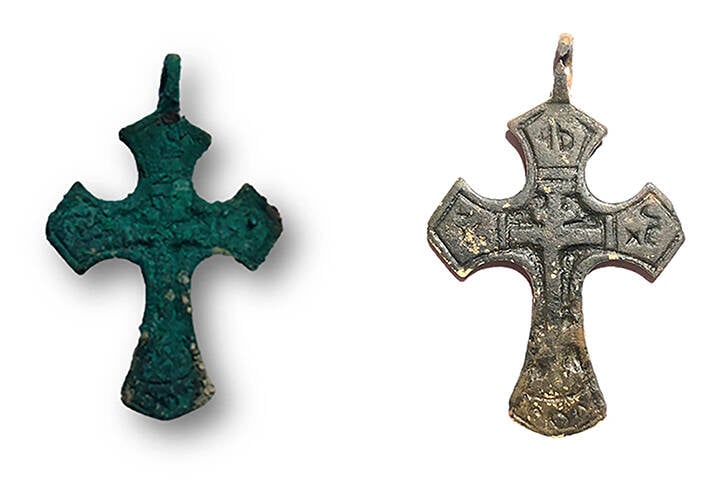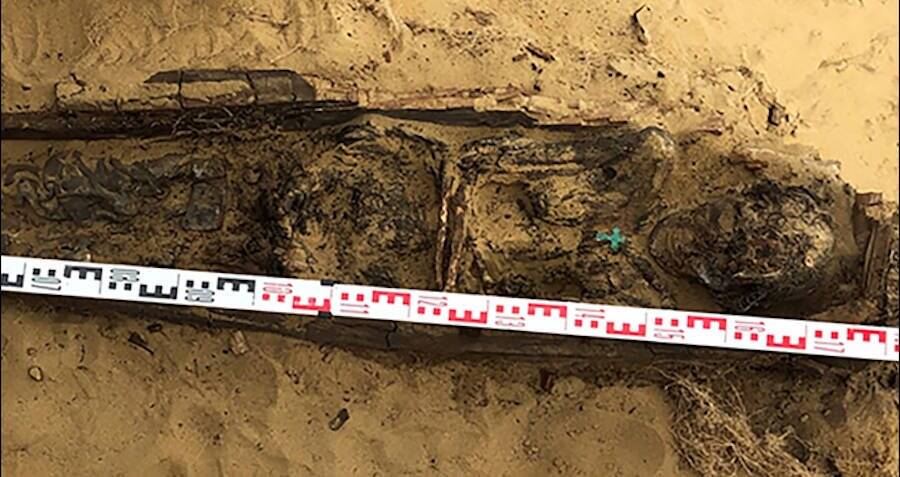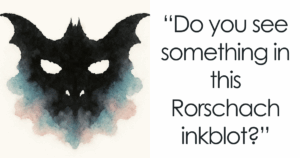Ancient Siberian Burial Unveils Mysterious Woman Wrapped in Foal-Skin and a Copper Cross—What Secrets Does She Hold?
“Her soft tissues have preserved very well,” said Solovyova. “This was natural mummification. Maybe she was buried in winter and frozen.”
According to The Sun, it was initially believed that this was the site of Lensky Ostrog — Russia’s first settlement in the region, founded in 1632. Previous radiocarbon dating on graves in the area supported the notion that burials occurred there between 1440 and 1670.
This latest find, however, has dashed all hopes that this was the case.

Elena Solovyova/The Siberian TimesResearchers analyzed the mummified woman’s copper cross, which didn’t appear to be traditional.
Not only have there been concerns that these dates weren’t reliable, but the woman’s copper cross, clothing, and radiocarbon dating clearly indicate she was an ethnic Yakut — not Russian — and buried much later.
This has forced regional experts to reassess what they know.
According to The Daily Mail, while the woman was clearly a Christian, she was almost definitely an ethnic Yakut and buried in the mid-1800s. If the site had, indeed, been Lensky Ostrog, the conquest of Siberia would’ve dated back to the 1630s.
“After we cleaned this cross, we noticed that it didn’t quite look traditional,” Solovyova explained. “We analyzed the inscriptions and came to the conclusion that they were made by a local Yakutian master because there were some ‘mistakes’ in the lettering.”
Not only do researchers now believe the site dates to the 19th century, but that some of the woman’s clothing was machine-made. Her leather stockings even had torbasa attached — traditional Yakutian boots lined with fur.













